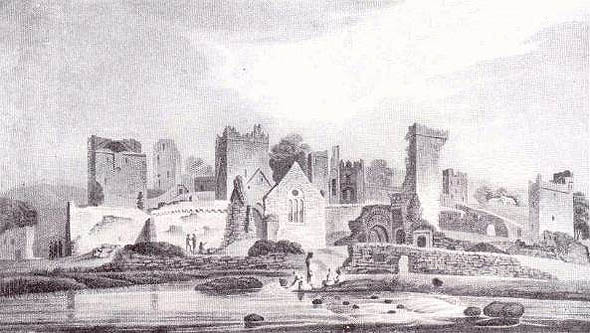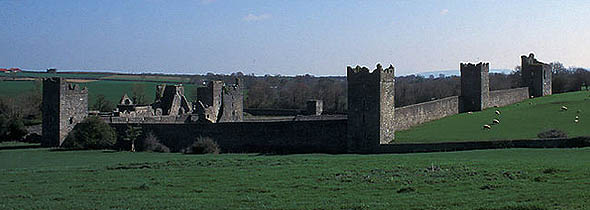Publication on Kells Priory, Co. Kilkenny launched

This comprehensive publication “Kells Priory, Co. Kilkenny: Archaeological Excavations” is based on the excavation work of the late Tom Fanning, a State archaeologist and subsequently senior archaeology lecturer in NUI Galway. Mr. Fanning’s work is the culmination of an excavation project began in 1972, his work being completed by Miriam Clyne after Mr. Fanning’s death in 1993. Ms. Clyne was a student of Mr. Fanning’s who worked on the excavation in the 1980s and directed excavation work within the Prior’s Tower at Kells in 1996. The excavation undertaken at Kells is one of the largest ever undertaken in Ireland at a monastic house and the ensuing publication is one of the largest ever published on a rural medieval site.
On launching the publication, Minister Gormley said, “This fine publication is another example of my Department’s determination to make available the results of archaeological excavations in Ireland and especially, with this new archaeological monograph series, those excavations undertaken by, or on behalf of, the National Monuments Service. The Kells Priory publication throws much light on the development of priory buildings over the centuries up to and even after the dissolution of the monasteries under Henry VIII. It will be a very useful reference for all types of medieval finds for many years to come”.
Tom Fanning made a special study of Irish medieval floor tiles and the Kells excavation produced a large collection of tiles, many of which were decorated and are illustrated in the book launched today. After he died, the National Monuments Service commissioned Miriam Clyne to write up the excavation report. Minister Gormley complimented her on producing an outstanding report in keeping with the international importance of the monument and the excavation findings. The report includes specialist sections from 27 other authors.

The original priory church was a simple cruciform building, but, over time, was extended in almost every possible direction. Likewise in the fifteenth century an entire second enclosure was added. Variously known as the ‘Burgess Court’ or the ‘Prior’s Ville’, the purpose of this large walled enclosure with a number of tower houses along its circuit, remains a subject of debate and a target for future research. The excavations have intriguingly allowed the identification of some monastic buildings that are not often identifiable, such as the infirmary and the kitchen.
A large part of the volume is taken up with the archaeological finds, some 20,000 in all. These range from pieces of carved stone, to pottery, to floor and ridge tiles, to metal objects etc. The collection of painted window glass is probably the largest collection ever recovered in Ireland and it has been possible to reconstruct what some of the window patterns may have looked like.
The Kells Priory publication is the third in a new Archaeological Monograph series produced by the Department of the Environment, Heritage and Local Government. Former publications dealt with excavations at Roscrea Castle and St Audoen’s Church, Dublin. Future publications will deal with excavations at Glanworth Castle, Co. Cork; Tintern Abbey, Co. Wexford; Trim Castle, Co. Meath, Barryscourt Castle, Co. Cork and Ardfert Cathedral, Co. Kerry.
